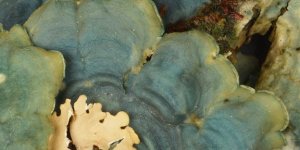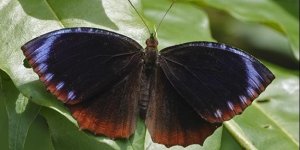| News / Science News |
Corralling Carrots' Microbial Allies Could Stymie Disease
Carrots, while in the ground, are home to a community of microorganisms, some members of which wage a kind of battle for supremacy against others that cause plant disease and costly losses to farmers who grow the vegetable.

Fresh Carrots. Photo: Jonathan Pielmayer/Unsplash
Now, a team of university and Agricultural Research Service (ARS) scientists has begun to identify some of these "good guy" microbes. The findings provide a critical step toward learning how carrot growers could enlist these beneficial microbes as an effective defense against diseases like Alternaria leaf blight.
One clue to emerge is soil-building practices that allow the microbes to colonize carrots, protecting them from attack. Another tantalizing clue is the genetic makeup of the carrot varieties themselves, which may predispose them to being colonized.
In addition to adding appealing color and flavor to salads, vegetable medleys and other dishes, carrots are rich in beta carotene, vitamins, minerals and dietary fiber.
Threatening that farm-to-table supply, however, is Alternaria dauci, the fungal culprit behind Alternaria leaf blight, which occurs in most areas where carrots are grown.
Unchecked, the disease causes decay in both the carrot's distinct feathery leaves above ground and taproot, below ground, diminishing its yield, quality and marketability.
Fungicide use, rotations with non-host crops and resistant varieties are among tactics used to counter Alternaria leaf blight.
However, the potential of bacteria and fungi that peacefully colonize the carrot plant—called "endophytes"—may also have merit, said Philipp Simon, a plant geneticist who leads the ARS Vegetable Crops Research Unit in Madison, Wisconsin.
To learn more, collaborators with Purdue University and the Organic Seed Alliance, together with Simon, evaluated 36 diverse commercial carrot varieties and breeding lines for their reactions to Alternaria leaf blight in either conventionally managed or organically farmed plots.
In the conventional plot, for example, pre-emergent herbicides were applied after the carrots had been planted, while in organic plot, weeds were hand-pulled as needed.
The researchers ranked the severity of Alternaria leaf blight in the carrots on a scale of 1 to 12 and harvested the vegetables. They grew cultures of endophytes from nine of lowest-scoring (healthiest) carrot varieties and identified them using DNA "fingerprinting" methods.
They also conducted petri-dish and seed experiments confirming the endophytes' anti-Alternaria activity.
More bacteria (22 species) than fungi (six species) were isolated from the carrot varieties.
Stenotrophomonas, Xanthomonas, Pseudomonas, Paenibacillus and Methylobacterium bacteria were among the most prevalent.
Soils in organic plots had more organic matter, a greater diversity and abundance of endophytes, and plants grown in these plots had lower disease levels than conventional plots.
Some carrot varieties' genetic makeup made them more "endophyte-friendly" than others, especially in the organic plot. Other varieties hosted lots of endophytes regardless of how they were grown, suggesting a complexity that still needs to be teased out.
Exactly how the endophytes protect carrots also isn't well understood. Some possible explanations include excluding Alternaria leaf blight fungi from choice space and nutrients, secreting antibiotics to keep them at bay or by helping mobilize the carrot plant's own defense, called "induced systemic resistance." (Agricultural Research Service)





